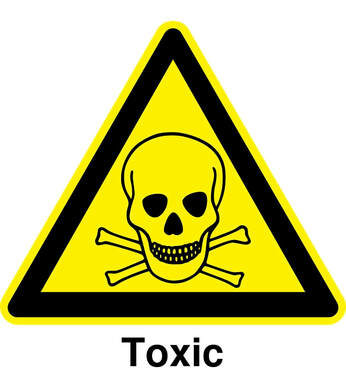 In the United States, there is now a growing movement to ban the dangerous chemical “dihydrogen monoxide”. What is this chemical? Dihydrogen monoxide is widely used in industry for processing, washing, diluting, cooling, or transporting a variety of products. Specifically, it is used by smelting facilities, petroleum refineries, and industries producing metal, chemical, and paper products, but most alarmingly, it is also widely used by the food industry. So what is the problem with this chemical? The problem is that it can kill people!  Sodium Salt of Thimerosal Sodium Salt of Thimerosal Accidental inhalation of dihydrogen monoxide kills several thousand Americans every year and over 2 million people worldwide. Oral ingestion of dihydrogen monoxide can result in dihydrogen monoxide intoxication which is characterized by headaches, confusion and disorientation, and nausea and vomiting. If left untreated, dihydrogen monoxide intoxication may lead to muscle weakness, spasms or cramps, and can cause seizures and loss of consciousness. Exposure to the solid form of dihydrogen monoxide can cause serious tissue damage. Pure dihydrogen monoxide injected intravenously to laboratory rats or mice will kill them. Despite the above, get ready for this, there is no urgency whatsoever in the government to ban this chemical. It is dumped legally (!) as a waste product by multiple industries into our rivers and lakes, and even into the ocean. Dihydrogen monoxide in the environment contributes to global warming, and to the erosion of the landscape. It causes corrosion of metals, electrical failures, and millions of dollars in property damage each year. The acid form of dihydrogen monoxide (hydroxyl acid) is a component of acid rain which destroys our forests. The presence of dihydrogen monoxide can be detected in wildlife and in our own bodies! Enough is enough! The time has come to ban the use of dihydrogen monoxide for good. Will you join our group of concerned citizens, donate to our cause, and help us pressure our government to vanish the use this dangerous chemical? Let me answer that question for you. The answer is: NO. Why? Because dihydrogen monoxide is one of the chemical names of “water”. What I wrote in this post about dihydrogen monoxide is just my version of a recurrent hoax /joke that has been going around for decades, and is meant to illustrate how the lack of scientific literacy, and the phrasing of alarmist claims, can affect public opinion. In the most extreme forms of this hoax, people are requested to sign a petition to ban dihydrogen monoxide, which often leads to the collection of many of signatures. Choosing the right words, and saying things about any chemical in the right way, can make it look scary, and in this case, I didn’t even have to lie. Everything I wrote is true. For example, accidental inhalation of water can kill people (it’s called drowning), excessive ingestion of water can be hazardous (it’s called over hydration; there is a method of torture based on this), formation of water crystals (ice: solid form of water) inside the cells of your tissues can damage them (frostbite), and injection of the right amount of pure water into animals can wreak havoc on the body’s electrolyte balance and kill them. In today’s vast scientific literature, where virtually every chemical has been tested in one way or another, it is very difficult not to find examples of a chemical having a deleterious effect on some parameter of some biological model. And with today’s unparalleled access to information, people who believe they know more than the experts can set out on a crusade against any chemical. All they have to do is pick and choose studies from the scientific literature, without any regard for their quality or relevance, and weave them into a narrative using innuendo and questionable association to other compounds, which will cast the chemical in the worst possible light. This approach combined with the right mix of emotions, exploitation of human suffering, and politics can prove very effective, and is not unlike selling snake oil. A famous case of the above strategy is when those opposed to vaccination waged a campaign against the chemical thimerosal which was alleged to cause autism. Thimerosal is a chemical that was used in many vaccines to prevent the growth of germs. Once inside the body, thimerosal is degraded to a derivative of mercury called ethylmercury. Mercury by itself or in the form of methylmercury is toxic, but ethylmercury is not toxic at the levels delivered by vaccines and is cleared from the body faster than methylmercury. In many cases, the anti-vaccine popular literature engaged in the innuendo that because mercury is toxic and thimerosal contains mercury, then thimerosal must be toxic. However, the toxicity of an element like mercury is heavily dependent on the way it is combined with other elements in chemical compounds. For example, the explosive elemental sodium (Na) and the extremely toxic chlorine (Cl), when combined with each other form the innocuous NaCl which is table salt. The pressure to ban thimerosal kept mounting, and the US Public Health Service decided to request that vaccine companies remove thimerosal from most childhood vaccines in 1999 as a precautionary measure to decrease overall exposure in infants to mercury derivatives. However, the best designed studies did not find any conclusive association between thimerosal (or vaccines for that matter) and autism. After thimerosal was removed from most childhood vaccines, the number of cases of autism has kept on increasing, indicating that thimerosal in vaccines was not responsible for this trend. However, none of this has been accepted by the anti-vaccine community, which is busy at work convincing more and more parents not to vaccinate their children and peddling conspiracy theories. Not unexpectedly, the number of measles cases in the United States has reached an all-time high since it was seemingly eliminated in 2000. This is not to say that there aren’t legitimate cases where the public should be concerned about the use of certain chemicals in medicine and industry, or instances where politics or other influences have vitiated the established procedures to determine safety. But the answer is not to stoke people’s fears, enshrine faulty science as truth, and disavow the assessment of experts on complex scientific issues claiming they have “sold out” if they do not support alarmist theories. The dihydrogen monoxide hoax is a joke, but what happened to thimerosal isn’t. Our life is better today thanks to thousands of medicines and chemicals produced by our pharmaceutical companies and industries. If we are concerned about the safety of these products, we should work with our scientific and medical organizations, not against them. Human nature is flawed. There will always be individuals who will engage in deceit, but the vast majority of scientists are principled people who will accept the evidence when it is clear and reproducible. The image from Pixabay is licensed for public use. The image of thimerosal by vaccinationist was taken from PubChem and is in the public domain.
0 Comments
|
Details
Categories
All
Archives
June 2024
|
 RSS Feed
RSS Feed